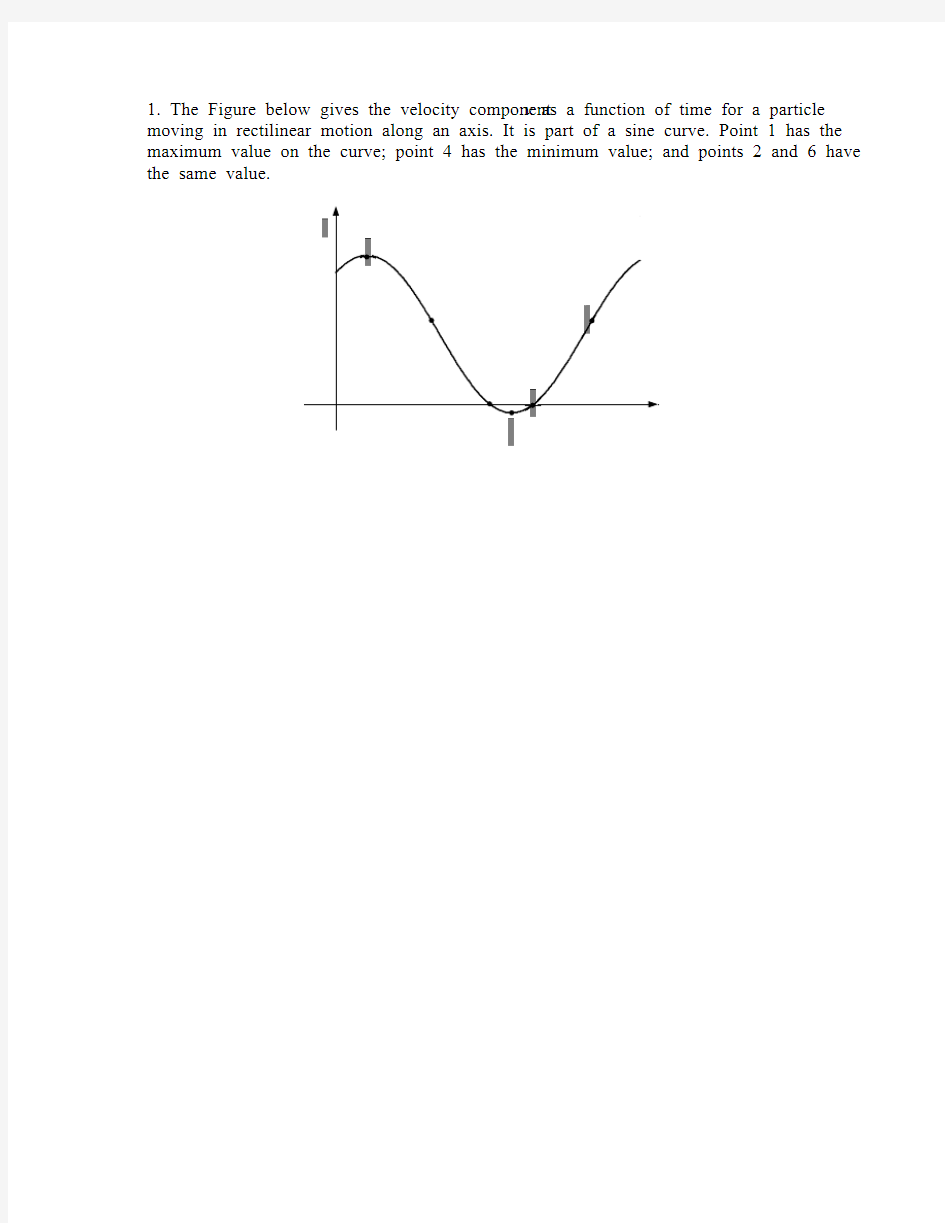ENPH-131--midterm_2006_solutions


1. The Figure below gives the velocity component v as a function of time for a particle moving in rectilinear motion along an axis. It is part of a sine curve. Point 1 has the maximum value on the curve; point 4 has the minimum value; and points 2 and 6 have the same value.
3. Person A is moving forward with velocity vector v as shown in the figure (overhead picture). The total acceleration vector of the person may be either of four vectors a 1, a 2, a 3,a
4.
a) Check the box that correctly explains what is happening to the direction of motion at this moment:
Direction remains unchanged Turning to the person’s left Turning to the
person’s right
a 1 √
a 2 √
a 3 √
a 4 √
b) Check the box that correctly explains the change of the speed of the person at this
moment:
constant Increasing Decreasing
a 1 √
a 2 √
a 3 √
a 4 √
c) Rank the radius of curvature in increasing order (mention any ties and justify your answer) 2, 1=4, 3
Since the velocity is the same for all four cases, the normal component of acceleration determines the radius of curvature: n
n a v v a 22
=?=ρρ therefore, larger normal component results in smaller radius of curvature.
d) Rank the rate of change of speed in increasing order (mention any ties and justify your answer) 3=4, 2, 1
Speed change is determined by the tangential component of acceleration. In 3 and 4,
tangential acceleration is 2 units in the negative direction which make the speed decrease. In 2, there is no tangential acceleration therefore, the speed remains unchanged and in 1, the speed is increasing because of the positive tangential acceleration.
2. The small block is sliding on the inclined wedge as shown. For each of the following scenarios, draw the free-body and kinetic diagrams (FBD/KD) of
i) the block;
ii) the wedge.
Use k f F for kinetic friction and s f F for static friction wherever necessary and clearly
indicate the directions of forces and accelerations whenever possible. The force of gravity is acting straight down in the Figure.
a) The incline is smooth, the horizontal surface is rough enough to prevent the wedge from moving.
5. During action movies, cars often leave the ground for a variety of dramatic reasons. In the scene under examination, the stunt driver has been asked to get the car up to a sufficient speed so that it can go up a 20o incline, launch into the air, and land on a platform located ahead of the car. The relevant dimensions are shown in the sketch. Treat the car as a mass particle,
a. solve for the minimum speed v that will allow the stunt to be successfully
undertaken and
b. determine the magnitude and direction of the velocity immediately before landing. The direction should be reported as an angle with respect to the horizontal
Solution:
Assume the car will launch at the edge of the platform, then 0V is the minimum initial speed, and t V is the velocity before landing.
a)
In horizontal direction: 0cos 20 =79 ft o V t (1) In vertical direction: 201sin 20211011 ft 2
o V t gt ?=?= (2) Substitute 079 ft =
cos 20o t V
into (2): 02
0sin 11 ft 80.1 ft/s V V =?==
b)
000001cos 2080.1*cos 2075.3 ft/s
79 ft 79 ft = 1.05 s 75.3 ft/s cos 20
sin 20 80.1*sin 2032.2*1.05
6.41 ft/s 6.41 ft/s ()
75.6 ft/s
6.41 ft/s tan (
75.3 o o tx x o o ty y o t V V V t V V V gt V gt
V θ?=======?=?=?=?=↓==?= 4.87 (clockwise from horizontal direction)ft/s o =?
